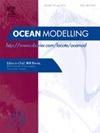预测热带气旋路径的深度学习方法:以西北太平洋地区为重点的分析
IF 3.1
3区 地球科学
Q2 METEOROLOGY & ATMOSPHERIC SCIENCES
引用次数: 0
摘要
在本研究中,我们利用深度学习技术对热带气旋路径预测进行了全面综合测试,旨在提高预测方法的效率和准确性。我们采用了中国气象局热带气旋数据中心的最佳路径数据集,该数据集覆盖了西北太平洋地区从1949年到2023年的数据。该数据集覆盖范围全面,包括热带气旋的关键细节,如时间、纬度、经度和风速。我们的重点是评估和比较不同的深度学习模型,包括递归神经网络(RNN)、长短期记忆网络(LSTM)和门控递归单元(GRU),以了解它们在处理复杂时间序列数据方面的有效性。通过详细分析各种模型配置,包括输入输出长度、隐藏大小、层数、双向网络的实现和注意机制等因素,我们发现 LSTM 和 GRU 模型在处理长期依赖性和提高预测准确性方面明显优于传统的 RNN 模型。此外,利用 LSTM 模型预报 2023 年太平洋热带气旋季节的主要热带气旋时,台风 "玛娃"、"杜苏芮 "和 "莎奥拉 "的平均误差分别为 21.84 千米、37.56 千米和 26.12 千米。该方法在快速应对极端天气变化方面也表现出很高的效率,处理每个热带气旋的预报仅需 8 秒左右。这些结果不仅说明了深度学习在热带气旋路径预测中的实用性,也为防灾减灾工作提供了新的有效工具。本文章由计算机程序翻译,如有差异,请以英文原文为准。
Deep learning approaches in predicting tropical cyclone tracks: An analysis focused on the Northwest Pacific Region
In this study, we conducted a comprehensive and integrated test of tropical cyclone track prediction using deep learning technologies, aiming to enhance the efficiency and accuracy of the prediction methods. We employed the Best Track dataset from the China Meteorological Administration's Tropical Cyclone Data Center, which covers the Northwest Pacific region from 1949 to 2023. This dataset provides comprehensive coverage, encompassing critical tropical cyclone details like time, latitude, longitude, and wind speed. Our focus was on evaluating and comparing different deep learning models, including Recurrent Neural Networks (RNN), Long Short-Term Memory Networks (LSTM), and Gated Recurrent Units (GRU), for their effectiveness in handling complex time series data. Through detailed analysis of various model configurations, including factors such as input-output lengths, hidden size, the number of layers, the implementation of bi-directional networks, and attention mechanisms, we discovered that LSTM and GRU models significantly outperform traditional RNN models in dealing with long-term dependencies and enhancing prediction accuracy. Moreover, the LSTM model, used to forecast key tropical cyclones during the 2023 Pacific tropical cyclone season, achieved mean errors of 21.84 km, 37.56 km, and 26.12 km for Typhoons Mawar, Doksuri, and Saola, respectively. This method also demonstrated high efficiency in rapid response to extreme weather changes, processing each tropical cyclone's forecast in just about 8 s. The results not only illustrate the practical utility of deep learning in tropical cyclone track prediction but also provide new, effective tools for disaster prevention and mitigation efforts.
求助全文
通过发布文献求助,成功后即可免费获取论文全文。
去求助
来源期刊

Ocean Modelling
地学-海洋学
CiteScore
5.50
自引率
9.40%
发文量
86
审稿时长
19.6 weeks
期刊介绍:
The main objective of Ocean Modelling is to provide rapid communication between those interested in ocean modelling, whether through direct observation, or through analytical, numerical or laboratory models, and including interactions between physical and biogeochemical or biological phenomena. Because of the intimate links between ocean and atmosphere, involvement of scientists interested in influences of either medium on the other is welcome. The journal has a wide scope and includes ocean-atmosphere interaction in various forms as well as pure ocean results. In addition to primary peer-reviewed papers, the journal provides review papers, preliminary communications, and discussions.
 求助内容:
求助内容: 应助结果提醒方式:
应助结果提醒方式:


